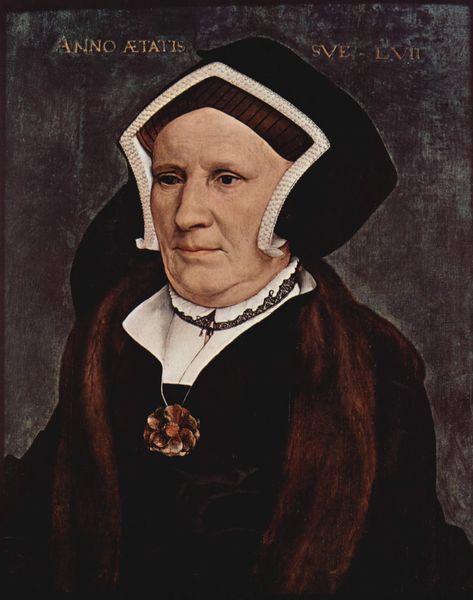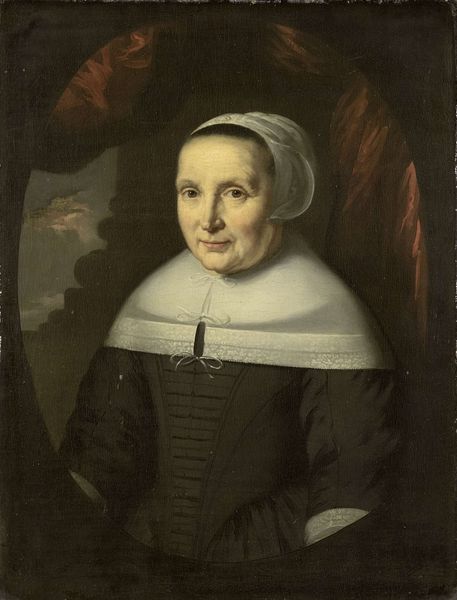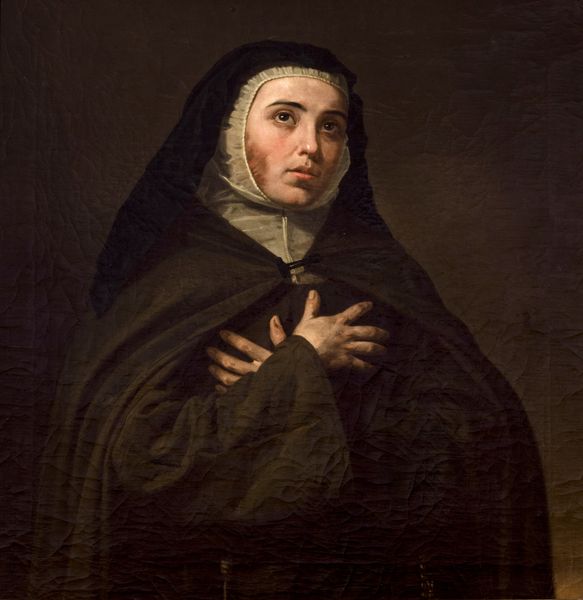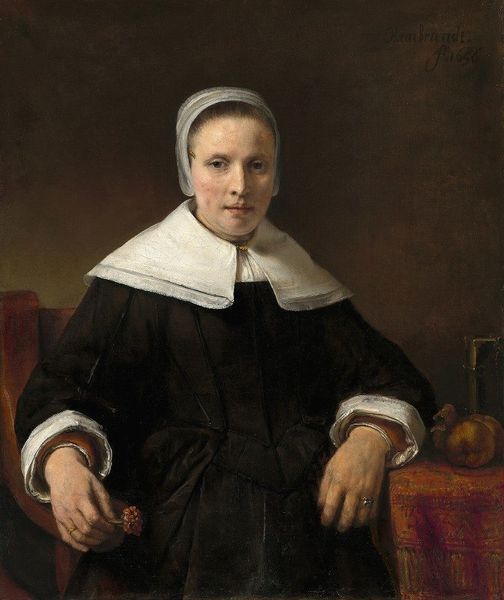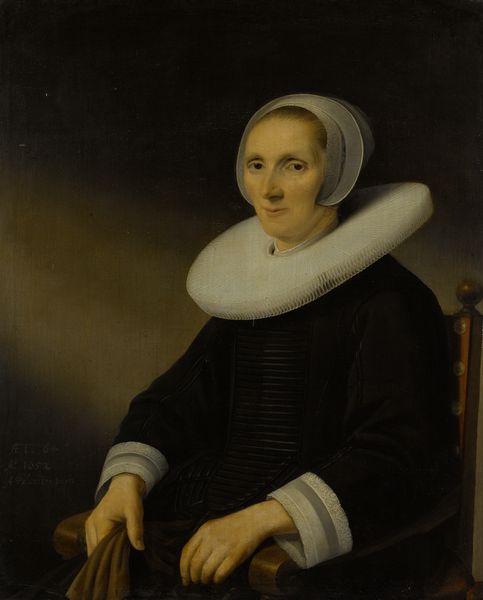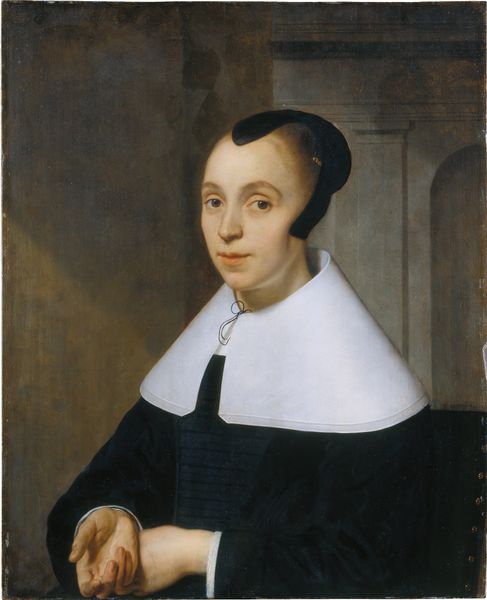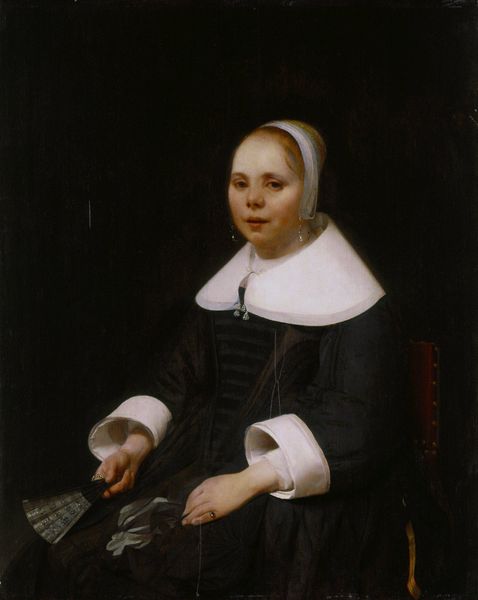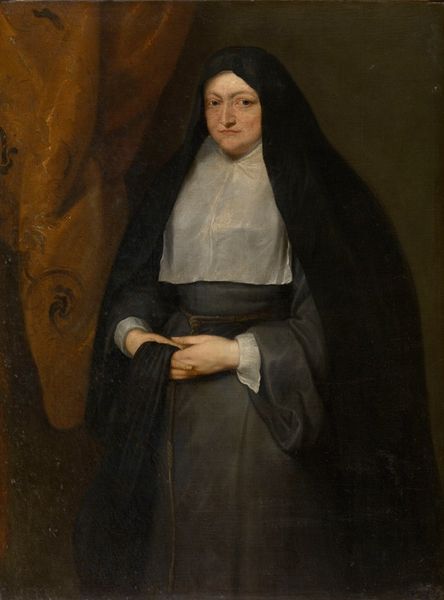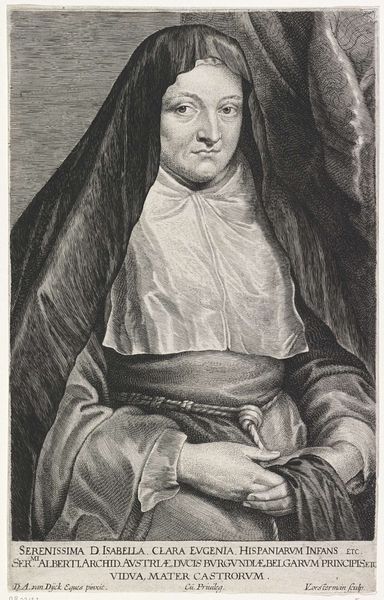
painting, oil-paint
#
portrait
#
baroque
#
dutch-golden-age
#
portrait
#
painting
#
oil-paint
#
realism
Copyright: Public domain
Editor: This is Nicolaes Maes’s "Portrait of a Woman" from 1656. The stark lighting gives her face such prominence. There’s a quiet intensity to her gaze that I find captivating. How do you interpret this work, especially considering its historical context? Curator: Absolutely. In the context of the Dutch Golden Age, portraiture served as more than just an image. It communicated status and morality, particularly for women. What do you notice about her clothing, or her pose? Editor: Well, her clothing is quite modest, a black dress with a prominent white collar and cap, but the fabric looks expensive, doesn’t it? And her hands, clasped in front of her, seem very deliberate, almost restrained. Curator: Exactly. Her reserved demeanor and somber attire reflected the values of the Dutch Republic: piety, domesticity, and economic prosperity achieved through hard work. How might we view this through a feminist lens? Editor: I guess the portrait, while celebrating her existence, also reinforces the very narrow roles available to women at that time? The lack of agency is…palpable. Curator: Precisely! The portrait also includes a family crest which can suggest her role is also about preserving status, heritage, family lineage. Her existence and likeness become an emblem of lineage. It’s not just a portrait of an individual, but a representation of a family, their values, and their place in society. Editor: I hadn't considered that. Thinking about how these images become a visual archive of societal values is really thought-provoking. Curator: Indeed! Examining these portraits helps us unpack the complex intersections of identity, class, and gender, and understand the evolving narratives that shape our understanding of art and history.
Comments
No comments
Be the first to comment and join the conversation on the ultimate creative platform.
